Lexicon of the Hamas Organization
The Kfar Aza Massacre
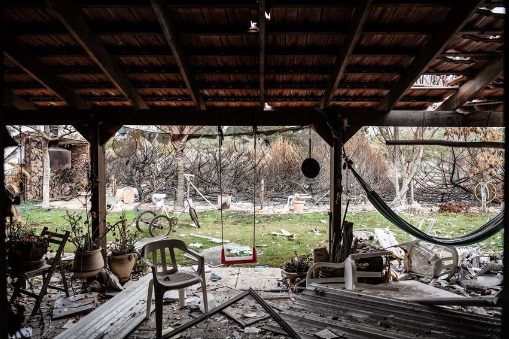
Kfar Aza after October 7th attack. Credit: ‘חנה הייבלום’ FB page.
The Kfar Aza massacre, which took place on October 7, 2023, stands as a brutal chapter in the history of the Israel-Arab conflict. This article synthesizes information from multiple sources to provide a comprehensive understanding of the event.
Background and History of Kfar Aza
Kfar Aza, a kibbutz situated about 3 kilometers from the Gaza Strip border, was a peaceful community of over 700 residents before the attack. The kibbutz is typical of many such communities in southern Israel, known for their modest architecture and a sense of close-knit communal living.
The Attack on October 7, 2023

Entire Kutz family murdered in Kfar Aza. Credit: ‘ישראל ביתנו’ FB page.
On this fateful day, approximately 70 Hamas militants infiltrated Kfar Aza, launching a surprise attack that left the kibbutz in ruins. The attack was part of a broader offensive against over 20 towns and villages in southern Israel. The militants targeted the west side of the community first, an area where families with young children resided. They brutally massacred residents, torched cars and homes, and abducted several hostages. Reports indicate that the militants took women, children, and senior citizens among the hostages back to Gaza.
Casualties and Aftermath
The attack led to the deaths of 52 people at Kfar Aza, with more than 20 missing. The massacre was characterized by extreme brutality, including claims of beheadings, dismemberment, and burning of victims alive.
Survivors’ Stories
Survivors’ accounts paint a harrowing picture of the massacre. One survivor, Avidor Schwartzman, described how he and his family hid in a safe room for over 20 hours, witnessing the devastation of their community upon their rescue. Another resident, Gili Okev, recounted spending seven hours trapped in a safe room while the terrorists were just outside. Hanan Dann, a resident who survived with his family in a safe room, shared the tragic story of the Almog-Goldstein family, part of which was killed and part abducted to Gaza.
Rebuilding and Reflection
Despite the devastation, some residents expressed their determination to rebuild and not let the terrorists dictate their future. Gili Okev stated, “We will come back here and we’ll rebuild this place and it will flourish and grow”. This sentiment underscores the resilience and spirit of the community in the face of tragedy.
Conclusion
The Kfar Aza massacre was a tragic event that has deeply impacted the residents and the broader Israeli society. The stories of the survivors and the lost, along with the community’s resolve to rebuild, highlight both the brutalities of Hamas and the unyielding human spirit of the people of Kfar Aza.
Lexicon of the Hamas Organization
Al Shifa Hospital
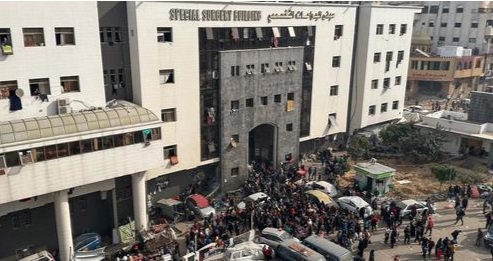
Shifa Hospital. Credit: ‘Washington Post’ FB page.
Al-Shifa Hospital, the largest medical facility in Gaza, has played a significant role in the region’s history, particularly during various conflicts involving Israel and Palestinian factions. This article provides an overview of the hospital’s background, its role in conflicts and the controversies surrounding it.
Background and History
Al-Shifa Hospital, originally a British Army barracks, was transformed into a hospital in 1946. During the 1948 Arab Israeli War, it became one of Gaza’s primary medical facilities. Following the war, the Egyptian administration expanded the hospital, adding various departments. Post the 1967 Six-Day War, when Israel occupied Gaza, the entire Egyptian hospital staff was taken prisoner, and subsequently, the hospital underwent significant renovations and expansions under Israeli administration. This included the addition of a large basement in the 1990s, which later became a point of controversy regarding its use.
Use During the 2007 Fatah-Hamas Conflict
During the Fatah-Hamas conflict in June 2007, Al-Shifa Hospital became a site of violence between the two factions. The conflict led to the deaths of members of both groups within the hospital premises. Hamas also reportedly dismissed hundreds of Fatah-affiliated medical staff and used the hospital as a strategic location. This period was marked by fear and violence within the hospital, severely affecting its operation and medical staff.
Role in the Wars with Israel
Al-Shifa Hospital has been central during various wars between Israel and Gaza. For instance, during the 2008-2009 Gaza War, the hospital was overwhelmed with casualties due to Israeli airstrikes. Allegations surfaced that Hamas used the hospital as a military base, a claim that was difficult to verify due to restricted access to Gaza by journalists. These allegations have been a recurrent theme in subsequent conflicts, contributing to the complexity surrounding the hospital’s role in the region.
Al-Shifa Hospital in the 2023 Israel-Hamas War
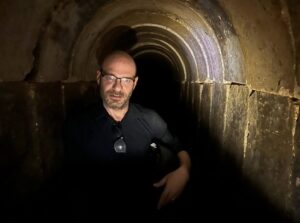
Hamas Tunnels under Al-Shifa Hospital. Credit: Ohad Hemo’s FB page.
The 2023 Israel-Hamas war brought Al-Shifa Hospital back into the spotlight. Israel and the U.S. accused Hamas of using the hospital as a command center, for storing weapons, and holding Israeli hostages.
Legal and Ethical Implications
The use of Al-Shifa Hospital in armed conflict raises significant legal and ethical questions. Under international law, hospitals enjoy protected status, which is jeopardized if the facility is used for military purposes. The allegations and counter-allegations regarding the hospital’s use in the 2023 conflict illustrate the challenges in maintaining this protected status in a war zone. The international community’s response and the calls for investigation highlight the complexities of warfare in densely populated urban areas like Gaza.
Conclusion
Al-Shifa Hospital’s history is deeply intertwined with the broader geopolitical and humanitarian issues in the Gaza Strip. Its role in various conflicts, especially the recent 2023 Israel-Hamas war, underscores the challenges of operating a major medical facility in a conflict zone. The hospital not only provides essential medical services to the population of Gaza but also represents the difficulties faced in preserving humanitarian spaces in times of war.
Lexicon of the Hamas Organization
Saleh al-Arouri
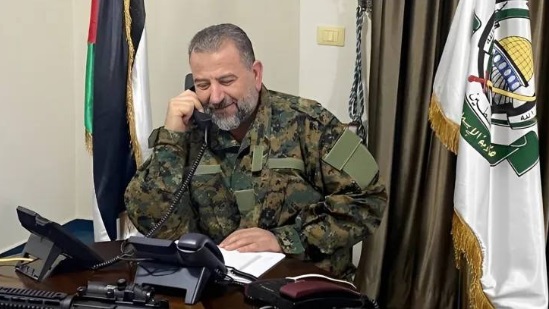
Saleh al-Arouri. Credit: ‘Eadio 786’ FB page
Saleh al-Arouri is a prominent Palestinian figure known for his deep involvement with Hamas. His association with Hamas has placed Saleh al-Arouri in the spotlight of the Israeli-Palestinian conflict.
Early Life and Involvement with Hamas
The early life of Saleh al-Arouri is marked by his gradual involvement with Hamas. This organization, known for its political and militant activities against the State of Israel, became a platform for Saleh al-Arouri to rise as a significant leader. His roles within the group have been diverse, encompassing both political strategy and militant operations.
Leadership and Strategy

Saleh al-Arouri and Ayatollah Khamenei - Iran’s former leader. Credit: Hillel Fuld’s FB page.
As a leader in Hamas, Saleh al-Arouri has been involved in planning and directing various activities in the West Bank. His leadership style and strategic decisions have significantly influenced the group’s operations in this region. Saleh al-Arouri’s approach often mirrored the overarching goals and tactics of Hamas, particularly in relation to the Israeli-Palestinian conflict.
Assassination of Saleh al-Arouri
Saleh al-Arouri, was assassinated on January 2, 2024, in a strike on an office in the Dahieh neighborhood of Beirut, Lebanon. This strike, widely believed to be carried out by Israel, also resulted in the deaths of six other individuals, including high-ranking Hamas militants. His assassination occurred just a day before the fourth anniversary of the assassination of senior Iranian military commander Qassem Soleimani.
Lexicon of the Hamas Organization
Nir Oz Massacre
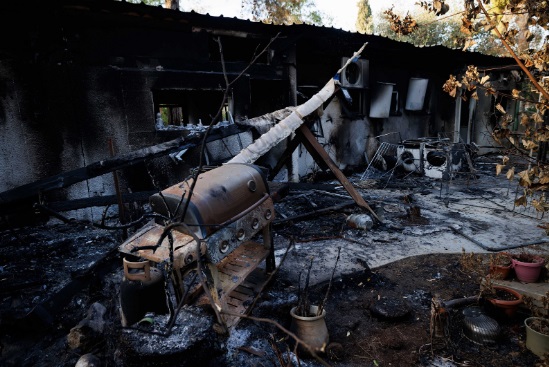
a burnt house in Nir Oz in October 7th. Credit: Kibbutz Nir Oz’s FB page.
Background History – Location, Community
The Nir Oz massacre occurred at the Nir Oz kibbutz in southern Israel. This community, known for its resilience and unity, became the epicenter of a horrific event that would mark one of the darkest days in the region’s history. The kibbutz, like many others in Israel, was a symbol of collective living and a testament to the enduring spirit of its residents.
The Assault on October 7th
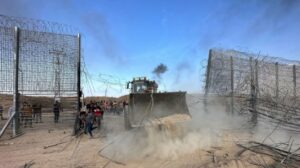
Palestinian tractor breaking through the border. Credit: Oz Koren’s FB page.
On October 7, 2023, Palestinian militants from the Gaza Strip executed a surprise attack on Israel, with Nir Oz Kibbutz being one of their primary targets. The attack was not just an isolated act of violence but part of a larger, coordinated assault across southern Israel, marking a significant escalation in the ongoing Israel-Arab conflict. The militants invaded the kibbutz, leading to widespread destruction and loss of life.
Death Toll and Casualties
The Nir Oz massacre resulted in the tragic loss of a significant portion of the kibbutz’s population. Out of approximately 400 residents, 180 were killed or abducted as hostages, according to The New York Times. The Jerusalem Post estimated about 80 abductions in Nir Oz alone. A veteran war correspondent reported that around a quarter of Nir Oz’s population was assassinated, kidnapped, or severely injured.
Evidence from Survivors
In the aftermath of the massacre, the survivors’ accounts painted a harrowing picture of the events. The kibbutz’s kindergarten and many homes were torched, leaving behind a scene of devastation. The surviving members of the kibbutz were evacuated to Eilat for safety. Among the casualties was the Kedem family, who were murdered in their secure room, including two 6-year-old daughters and a 4-year-old son. Additionally, among the hostages were notable figures like Polish-Israeli historian Alex Dancyg and a 12-year-old girl with autism, Noya Dan, along with her 80-year-old grandmother, Carmela Dan.
Conclusion
The Nir Oz massacre is a stark reminder of the fragility of peace and security in regions plagued by long-standing conflicts. The scale of the tragedy at Nir Oz underscores the human cost of the Israel-Arab conflict and highlights the urgent need for solutions that can bring enduring peace to the region. The stories of the survivors and the memories of the lost must continue to be part of the dialogue and efforts towards achieving a future where such tragedies are averted.
This article aims to provide valuable insights to readers seeking to understand the complexities of the Israel-Arab conflict and the impact of events like the Nir Oz massacre. By focusing on key aspects such as the background, the assault, the casualties, and the survivors’ accounts, it provides a comprehensive overview of this tragic event in recent history.
-

 News3 months ago
News3 months agoGaza could Have Been Singapore. Hamas Turned It Into a living nightmare
-

 News3 months ago
News3 months agoRape, slaughter, and atrocities—see the real face of Hamas
-

 News4 months ago
News4 months agoShe died while saving lives.
-

 News4 months ago
News4 months agoTrigger warning: This is the atrocity that’s happening in Israel right now
-

 News4 months ago
News4 months agoKidnapping elderly and children: Hamas are no heroes
-
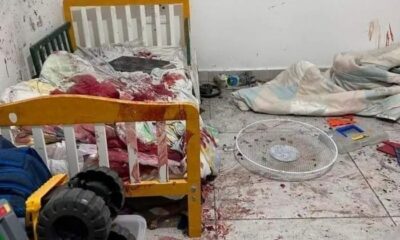
 News4 months ago
News4 months agoMonsters: Yahya Sinwar and Hamas kidnapped 150+ children and women.
-

 Hamas War Strategy, Tactics, and PR3 months ago
Hamas War Strategy, Tactics, and PR3 months agoThe War Crimes of Hamas and ISIS in Exploiting Civilians
-

 News4 months ago
News4 months agoHamas turns a music festival into a massacre






